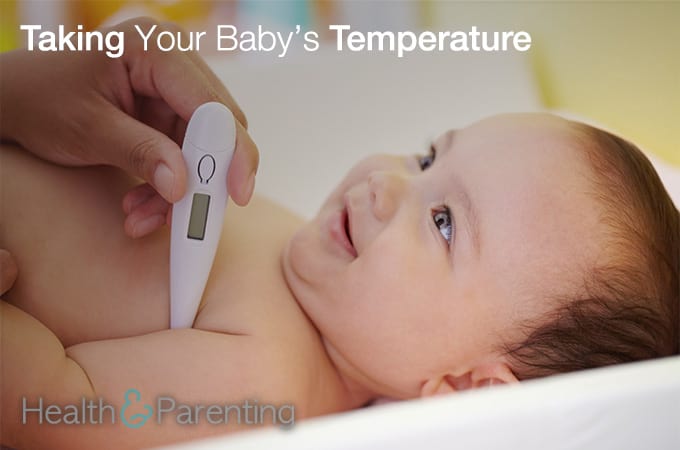Hopefully up to now, you haven’t had to worry too much about your baby running a fever. But as you enter the coming months, with your baby likely being more exposed to other children his or her age, and with teething on the horizon; there are probably a few fevers in your future.
No one likes to see their baby sick, and it can be especially heartbreaking that first time, when you feel a little helpless and aren’t entirely sure what’s wrong. Being able to appropriately assess your baby’s symptoms so that you can decide whether or not to call the doctor is important in keeping calm and dealing with the situation.
But how do you best take your baby’s temperature? And what kind of thermometer should you use?
The good news is, you have lots of options. And while an anal thermometer is considered best for infants under 3 months of age, there is no real “best” after that point. It’s just a matter of deciding what you are most comfortable with.
The old-school glass thermometers that your mom used to put under your tongue (or likely up your rectum when you were a baby) are of course still available, but not every parent is especially comfortable with using them, and getting an accurate reading can be a bit tricky if you don’t really know what you’re doing.
Thankfully, we have digital options today that can be a little more user friendly. Not only do they tend to work faster, but they can also give you a reading that is hard to misinterpret. Plenty of parents seem to prefer the digital thermometers that take a child’s temperature in their ear—this can be easier than trying to get them to keep the thermometer in their mouth.
As a general rule, in children a temperature of over 37.5C (99.5F) is a fever. Now, for babies younger than 3 months old, any fever over 100.4 degrees Fahrenheit warrants a call to the doctor. If your child is between three and six months old and has a temperature of 39C (102F) or above, call a doctor. If your little one is older than six months, low fevers aren’t usually anything to be too concerned about, especially if there are no other symptoms. A low fever is anything under 102 degrees, while a moderate fever is 102 to 104, and a high fever is anything over 104. While a fever isn’t considered dangerous until it reaches over 106, calling your doctor for anything over 102 is probably a good idea—particularly if there are other symptoms you are concerned about as well, such as persistent vomiting, refusal to feed, floppiness or drowsiness. Anything over 104 should result in an immediate trip to urgent care.
Of course, you should always feel free to call your doctor whenever you have any concerns at all. So even if your baby is running a 101 temperature, if you’re worried, go ahead and pick up the phone!
Written by Leah Campbell, infertility advocate, adoptive mama, writer and editor. Find me @sifinalaska on Twitter.
This information is not intended to replace the advice of a trained medical doctor. Health & Parenting Ltd disclaims any liability for the decisions you make based on this information, which is provided to you on a general informational basis only and not as a substitute for personalized medical advice. All contents copyright Health & Parenting Ltd 2016. All rights reserved.










